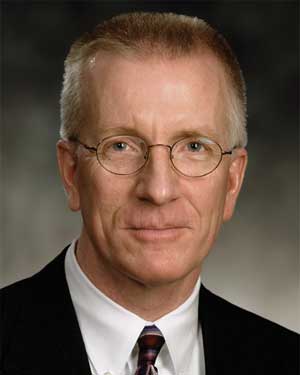Consider Consolidating

March 23, 2010
BY Stan Duran
Successfully operating in today's biodiesel production market is becoming more and more difficult. Competition is fierce, costs are rising, demand is fluctuating, tax benefits are not being extended, and government proposals are incomprehensible. Small- and medium-sized producers may have difficulty competing with other larger operations because of economies of scale. To overcome this challenge, small and medium producers could consolidate with other small, medium or large producers in order to attain the economies of scale necessary to remain competitive. Alternatively, larger operations may be interested in acquiring other facilities to increase their existing production capabilities and to provide a greater base of activities over which to spread their fixed costs, thereby reducing their overhead on a per-gallon produced basis.
A consolidation of entities is one strategy for continuing a producer's financial growth and to reach certain economies of scale. Consolidations can take the form of a sale of assets, a sale of equity, or a merger, all of which are commonly referred to as a "merger and acquisition," or M&A.
Suggesting an M&A transaction to advance an entity's growth is very easy to do, but the completion of such a transaction can be quite complicated. Ultimately, however, the financial model of a completed M&A transaction must demonstrate that the consolidation of entities benefits all parties (with certain exceptions) when compared to continuing operations as separate entities. It is synergism in its purist form-the whole is greater than the sum of its parts. In determining whether to complete an M&A transaction, the parties need to consider many items, including:
-the cost savings to be obtained from the transaction
-increased customer and supplier base
-the management, employees and culture that will survive
-intangible assets that are brought to the transaction
(goodwill, trade names, etc.)
-unique tangible assets that are brought to the
transaction (processes, customers, suppliers, etc.)
-the team that will work on completing the transaction
(financial analysts, accountants, attorneys, etc.)
-the type of transaction that will be completed
(asset sale, equity sale, merger)
-the entity that will survive the transaction
-the valuation of the assets that will be sold, exchanged
or merged and how it will be paid (equity, cash, deferred
payments, options, etc.)
-regulatory and legal compliance
-any and all transaction costs including the costs of
completing due diligence
-any and all tax ramifications related to the transaction
Be advised that the "laundry list" of issues provided above is by no means exhaustive. To the contrary, the list is extremely abbreviated. For instance, the interplay between the tax ramifications and the type of transaction to complete involves many other issues, which could only be covered in a writing much longer than this space allows.
The whole process behind an M&A transaction can be completed quickly, in as little as 30 days if the parties are motivated, and can take a very long time, more than a year, if the parties are not motivated. Obviously, the motivation behind all M&A transactions is the increased returns to be achieved once the transaction is complete.
Stan Duran is a partner in the Energy Group of Lindquist & Vennum PLLP. Reach him at (612) 371-3285 or sduran@lindquist.com.
A consolidation of entities is one strategy for continuing a producer's financial growth and to reach certain economies of scale. Consolidations can take the form of a sale of assets, a sale of equity, or a merger, all of which are commonly referred to as a "merger and acquisition," or M&A.
Suggesting an M&A transaction to advance an entity's growth is very easy to do, but the completion of such a transaction can be quite complicated. Ultimately, however, the financial model of a completed M&A transaction must demonstrate that the consolidation of entities benefits all parties (with certain exceptions) when compared to continuing operations as separate entities. It is synergism in its purist form-the whole is greater than the sum of its parts. In determining whether to complete an M&A transaction, the parties need to consider many items, including:
-the cost savings to be obtained from the transaction
-increased customer and supplier base
-the management, employees and culture that will survive
-intangible assets that are brought to the transaction
(goodwill, trade names, etc.)
-unique tangible assets that are brought to the
transaction (processes, customers, suppliers, etc.)
-the team that will work on completing the transaction
(financial analysts, accountants, attorneys, etc.)
-the type of transaction that will be completed
(asset sale, equity sale, merger)
-the entity that will survive the transaction
-the valuation of the assets that will be sold, exchanged
or merged and how it will be paid (equity, cash, deferred
payments, options, etc.)
-regulatory and legal compliance
-any and all transaction costs including the costs of
completing due diligence
-any and all tax ramifications related to the transaction
Be advised that the "laundry list" of issues provided above is by no means exhaustive. To the contrary, the list is extremely abbreviated. For instance, the interplay between the tax ramifications and the type of transaction to complete involves many other issues, which could only be covered in a writing much longer than this space allows.
The whole process behind an M&A transaction can be completed quickly, in as little as 30 days if the parties are motivated, and can take a very long time, more than a year, if the parties are not motivated. Obviously, the motivation behind all M&A transactions is the increased returns to be achieved once the transaction is complete.
Stan Duran is a partner in the Energy Group of Lindquist & Vennum PLLP. Reach him at (612) 371-3285 or sduran@lindquist.com.
Advertisement
Advertisement
Advertisement
Advertisement
Upcoming Events





